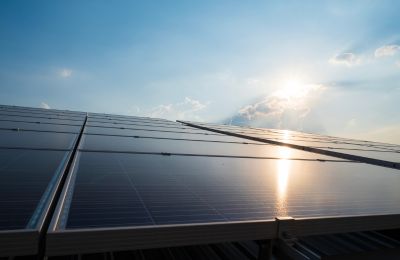How electricity flows on balconies


Energy. By 2030, electricity in Austria is to come entirely from renewable sources. Anyone with a balcony can contribute to this and also save money in the long run.
Today, (almost) anyone with their own balcony can become a power plant owner and harvest solar power. The necessary photovoltaic system is available for as little as €500. The legal and technical hurdles for such small systems with a maximum output of 800 watts can usually be easily overcome.
Since last autumn, it has been sufficient for apartment owners to notify all co-owners of the installation of the system in a timely manner. If no one objects within two months with a valid reason, this is deemed consent. The situation is different for rental apartments. Here, the landlord must explicitly consent in writing to even a small balcony photovoltaic system. However, this is becoming less and less of a problem: Wiener Wohnen, for example, grants permission to tenants of municipal apartments if the balcony power plant neither disrupts the appearance of the system nor affects neighbors. Many housing cooperatives take a similar approach.
Approval from the grid operator is not required to operate the 800-watt photovoltaic system on the balcony. The system simply needs to be reported to the responsible company – digitally on the customer portal or using a form available there. Technical data for the modules and inverter must be provided. "We check whether the electricity meter is suitable for the PV system and, if necessary, install a digital meter," says Manuela Gutenbrunner from Wiener Netze. The system can be put into operation two weeks after registration – even if no new meter has been installed by then. In this case, the energy supplier would be at a disadvantage. Analog electricity meters reverse their readings as soon as electrical energy from the balcony power plant is fed into the grid.
Installation is also simple: "In principle, a photovoltaic system with an output of up to 800 watts can be installed by the user and connected to the power grid via a Schuko plug and Schuko socket," explains Alfons Haber, CEO of E-Control. However, an extension cable may not be used for the connection. According to the expert, it is important that the system has proof of conformity, i.e. a CE mark. This ensures, for example, that the balcony power plant has an automatic grid decoupling device. This is necessary if, for example, the power is switched off in the entire house for wiring work. Without a grid decoupling device, the energy from the panels on the balcony could be life-threatening for the electrician. Due to this safety feature, a normal balcony power plant also does not supply energy in the event of a blackout.
While simple in principle, self-installation in a rented apartment is sometimes limited: The landlord may insist on installation by a licensed electrician. For apartments with older electrical wiring, especially systems with screw-type fuses, a professional inspection of the apartment's electrical system is recommended: "It's important to determine whether the apartment's current carrying capacity and line protection, i.e., the fuses, have sufficient reserves for the output of the balcony power plant," explains Haber.
How it can be worthwhile
The payback period for a small system depends on several factors: the orientation of the balcony or panels to the sun, the number of hours of sunshine in the area, electricity prices, and, above all, daytime electricity consumption. A well-aligned 800-watt photovoltaic system can generate approximately 640 kWh of electricity per year with 800 hours of sunshine. At an electricity price of 25 cents, this would result in annual savings of approximately €160, giving a low purchase price and a payback period of approximately four years.
However, in many cases, this calculation is probably just theoretical, as it only applies if the electricity generated is actually consumed entirely in one's own home. There is no compensation for solar power fed into the grid from balcony power plants. Anyone who is out during the day and has hardly any appliances running at home is essentially donating the electricity to the energy supplier. The situation is different if, for example, an air conditioner is used during the day, an electric car is charged, cooking is regularly done with electricity, or the washing machine and dishwasher are running.
If this isn't the case, a battery can help, allowing you to store the solar power for the evening. However, the cost of the storage system would have to be factored into the amortization calculation. Regardless of the calculations, a PV system on your balcony is definitely a contribution to a more climate-friendly future – and that has its merits.
Series: ESG and Real Estate. Every two weeks, the real estate department dedicates an article to sustainability or ESG (Environmental, Social, Governance), focusing on the ecological, social, and economic responsibility of the construction and real estate industries. The next ESG article will appear on May 24 in print and online at: diepresse.com/immobilien/esg
by Wolfgang Pozsogar
The press
energynewsmagazine


